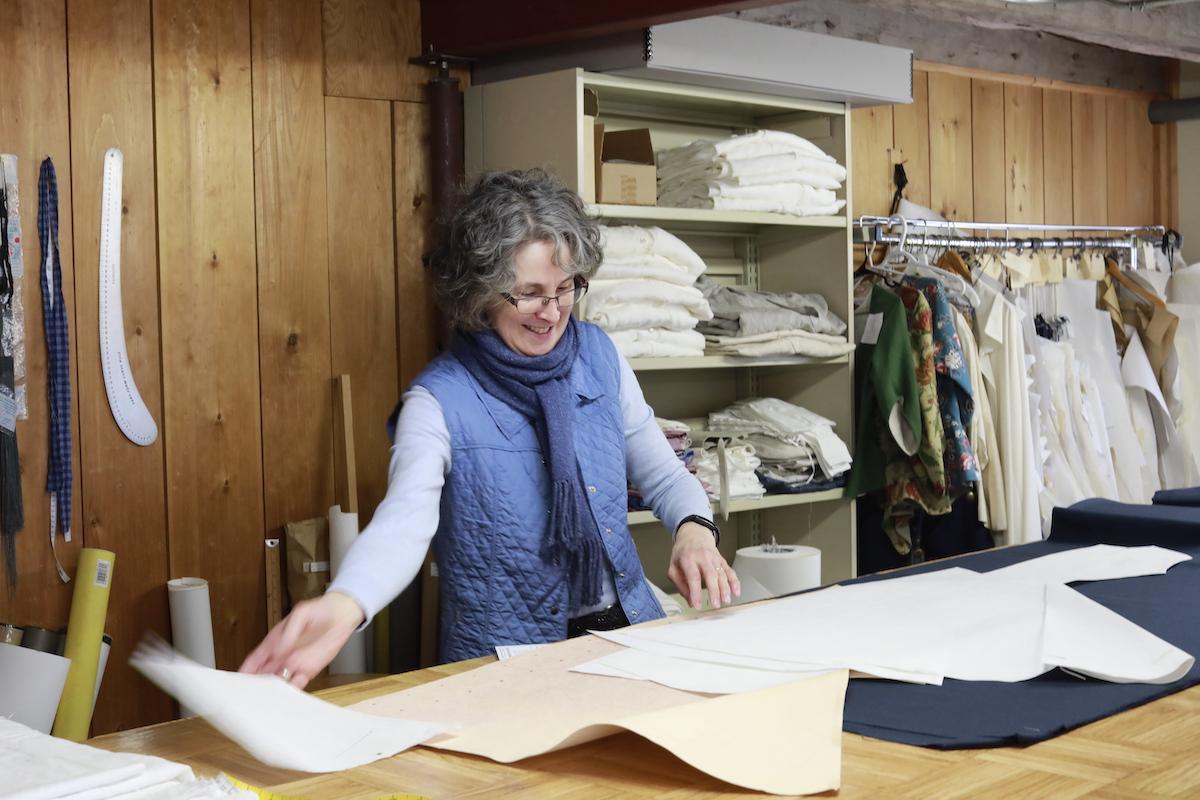
Elizabeth Tait has spent three decades as textiles curator at Fortress of Louisbourg/Emily Madinsky, Parks Canada
After chatting with Elizabeth Tait, you'll look at the costumed characters of national historic sites with a newfound appreciation.
She's the textiles curator at the Fortress of Louisbourg National Historic Site in Cape Breton, Nova Scotia, and she helps present stories of an 18th century fortified French town by dressing the heritage interpreters who animate characters from soldiers and drummers to upper class ladies and fishermen.
Tait manages the site's period reproduction clothing department, and while you probably won't see her or "the closet" when you visit, she "recognizes how important it is to be able to talk about some of what we do."
"What I do is very, very much behind the scenes," stresses Tait.
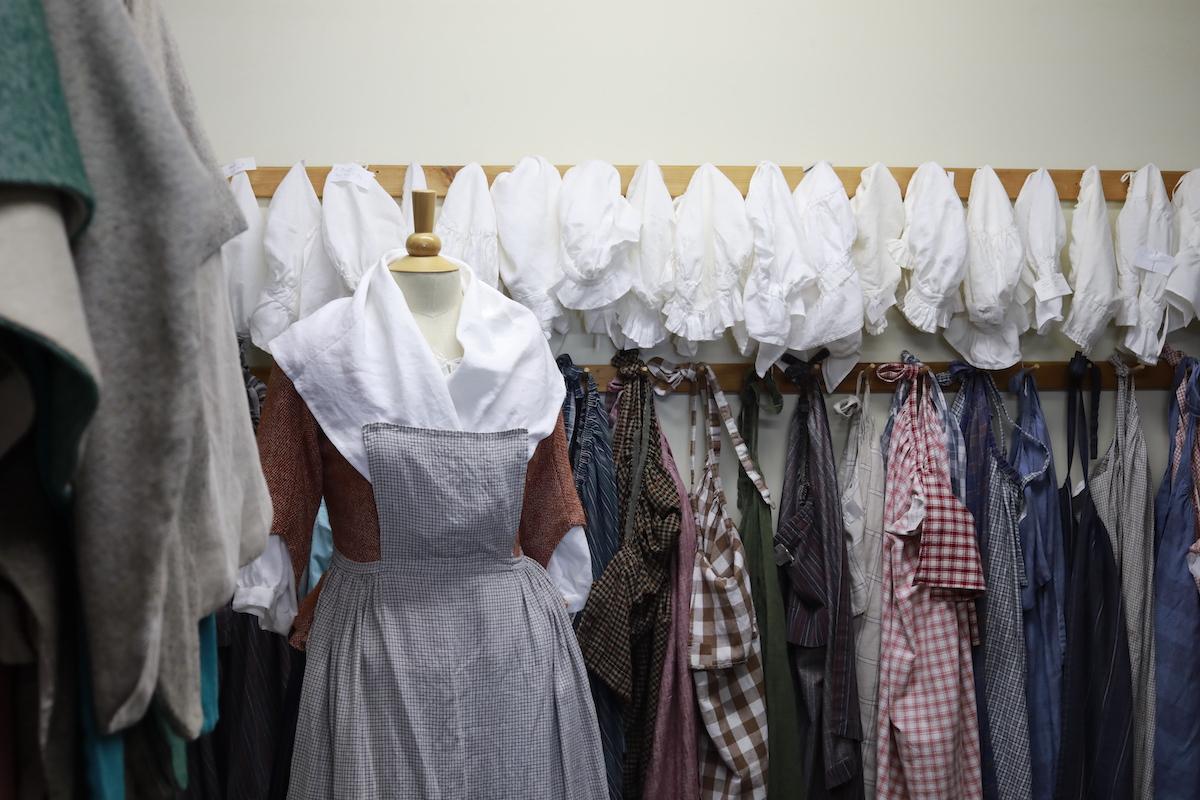
Some of the period costumes at the fortress/Emily Madinsky, Parks Canada
Tait did her undergraduate studies at the University of Alberta, collecting a bachelor of science in home economics and getting her first glimpse of a "very unique historic costume collection." She planned to go into textile conservation and did a few internships before earning a master of museum studies at the University of Toronto. From there, she worked as a contractor for an Alberta museum and did some teaching before nabbing a job at the Fortress of Louisbourg in 1990 and never looking back.
The reconstructed Louisbourg shows what life was like in a major trade and military hub twice besieged by the British. Visitors can do historical gardening, cook over an open fire, taste rum, fire a cannon and learn from authentically clad "residents" what it was like to be a soldier, woman or child centuries ago.
"Really what I'm responsible for is all the reproduction costumes worn by interpretive staff and at special events," says Tait. Her work load varies by season.
In the spring, as seasonal staff return, she pulls out all the pieces of their costumers and sees what needs to be repaired, altered or replaced. The costumes range from soldiers to civilians and involve different classes. One person might play two characters, one working class and one well-to-do. New staff get individual fittings to be costumed from head to toe with everything from wigs and hats to footwear and stockings. The staff sign out about 120 costumes each season, take them home at night and are responsible for their own laundry. Site guides, however, wear Parks Canada uniforms.
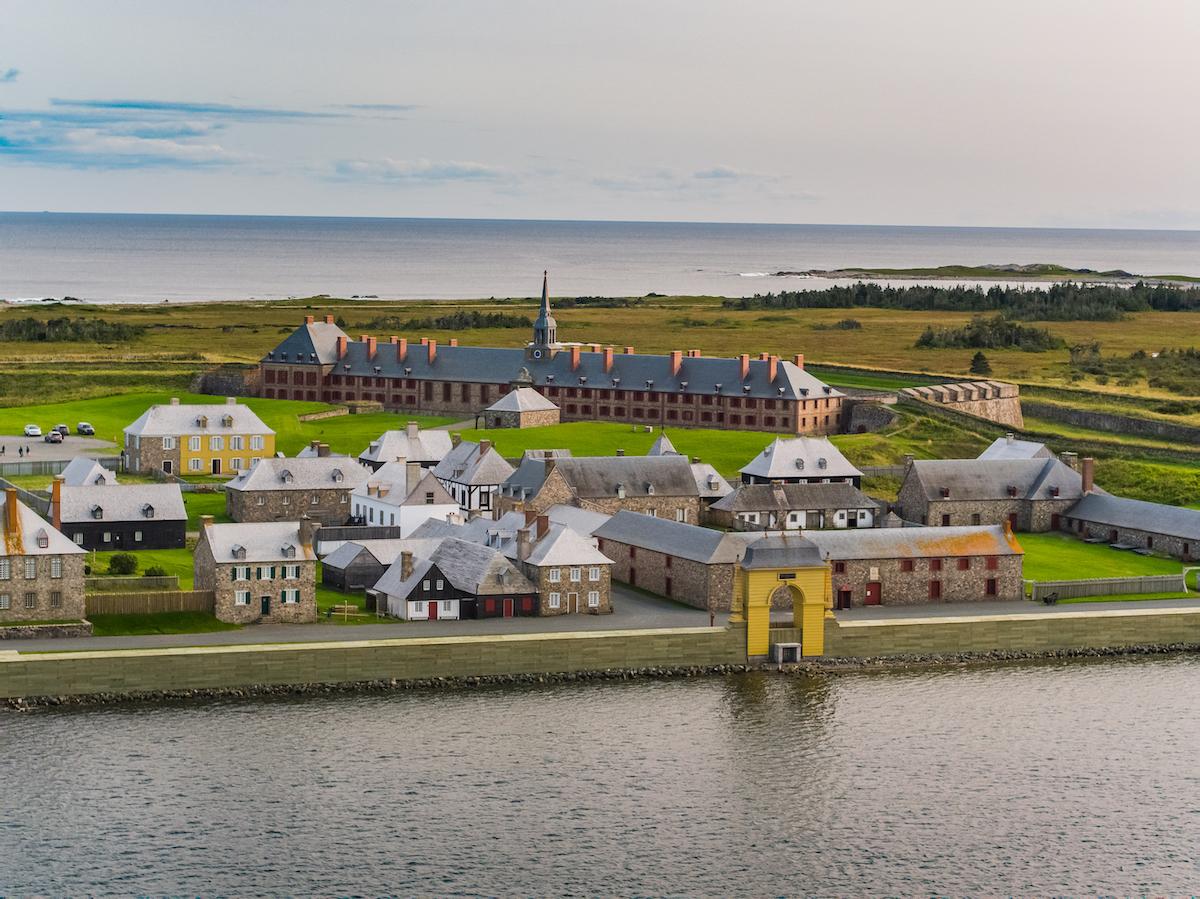
An aerial view of the Fortress of Louisbourg National Historic Site/Adam Hill, Parks Canada
Throughout the visitor season — typcially June to October — the work shifts to the ongoing maintenance of costumes.
"When I start to smell the wood smoke from the fireplaces, and start to hear the sheep or some of the animals, the place comes to life when all the seasonal staff come back in strength," enthuses Tait.
Visitors can explore multiple buildings and more modern exhibits. A ruins walk to the ocean showcases the remains of original — not reconstructed — buildings. Before Covid, there were guided walking tours, a gift shop and period restaurants with waitresses in period costumes. (The Fortress of Louisbourg Association runs most of the concessions, so Tait isn't responsible for those costumes.)
Come fall and winter, the costumes are returned, drycleaned and repaired or replaced. "A big part of what I do is replace worn costumes with new garments," admits Tait. "I really think of winter as when we are preparing for the next visitor season." Sometimes she takes part in off-season events by sending costumes to trade shows or hosting private, behind-the-scenes tours.
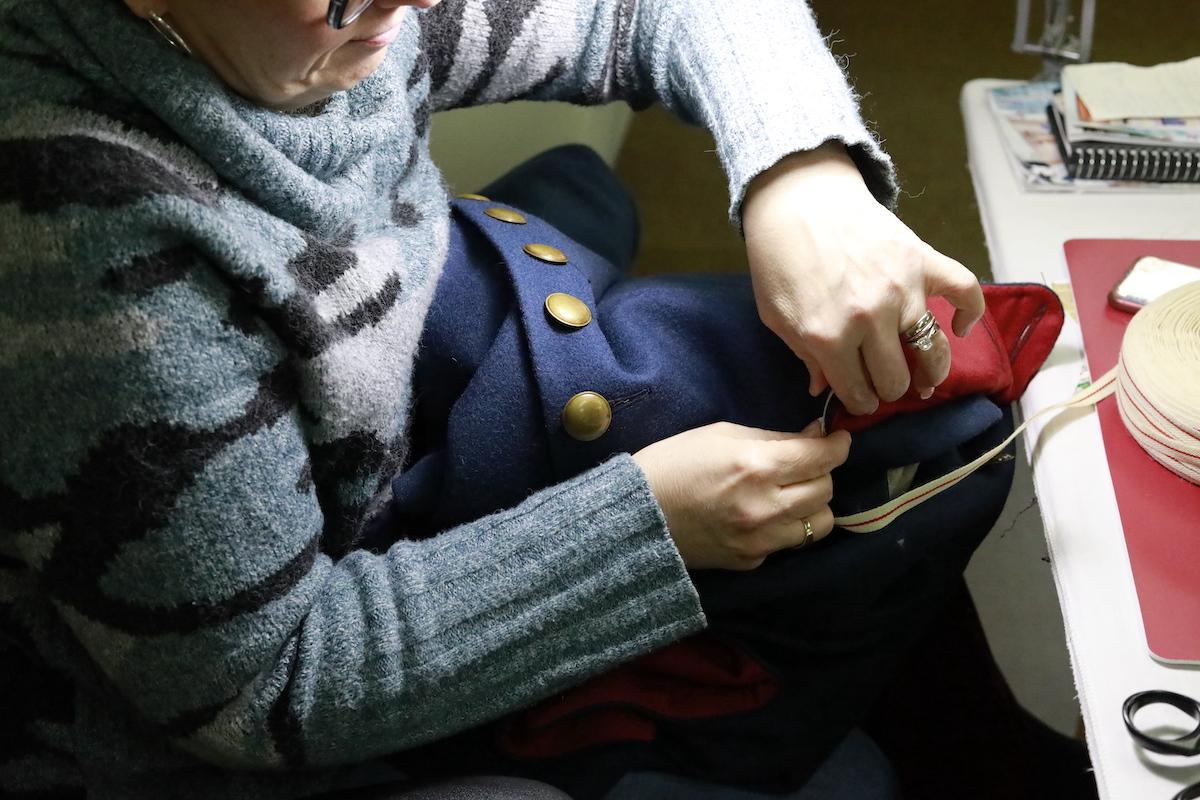
The fortress has two permanent employees working on costumes, and outsources work to tailors and seamstresses/Emily Madinsky, Parks Canada
Tait works with just one other permanent employee — a period clothing fabricator.
To come up with the costumes, Tait researches 18th century paintings, written descriptions and other "primary documentation" to come up with patterns. She must then research, source and purchase the material. And, because there's no way just two people could keep up with the workload, she then outsources much of the work to seamstresses and tailors in Cape Breton and across Canada.
"They are really interesting, talented people," says Tait. "One of the things that has been interesting is to see how the whole tailoring industry has changed. Some of these skills are really being lost to fast fashion." She provides the research information, material, patterns (usually), buttons and more, along with sample garments and written specs. They send the finished garments back to her. And while sewing machines can be used, the costumes are from a "pre-synthetic, pre-Velcro, no zipper" time.
"Sourcing appropriate materials — like linen, wool, silk, cottons and good reproduction shoes and hats and other appropriate material — and finding skilled people — it never ends," says Tait. "It's a challenge all the time." The fortress does have an extensive archaeological collection that includes military buttons that she can draw on when calling for reproductions.
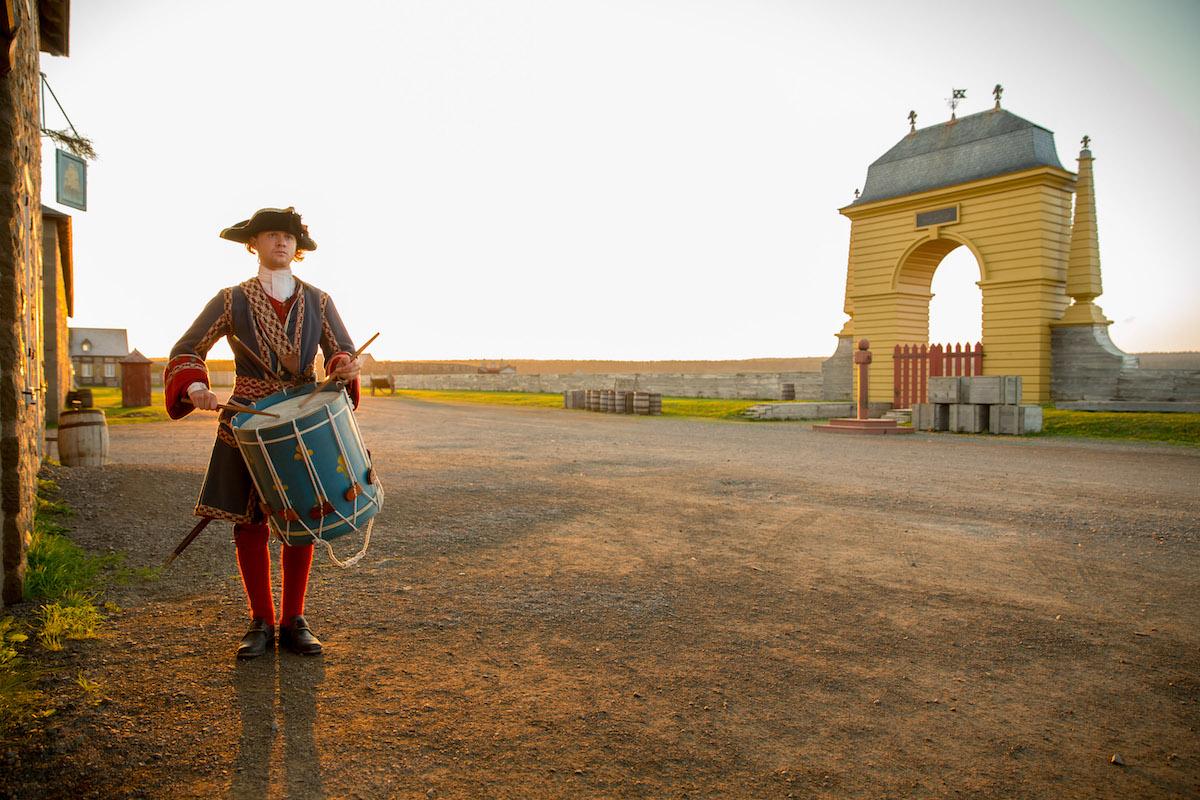
This drummers outfit, with its vibrant blue coat and intricate braid, was not easily sourced/Christopher Walzak, Parks Canada
One thing that Tait has really come to appreciate is how the seasonal staff "have a really nice skill of making a costume believable. We need an interpreter to take that costume and make it look like their clothing. We need them to make the site more believable, accessible and engaging for visitors." She gets a thrill in those fleeting moments when the costumed staff walk, talk and sit just so and she "gets a glimpse of what the 18th century would have been like."
As for Covid-19, it did change some of the way things were done in 2020, with speedier costume fittings, one-way traffic on the site and no guided tours. The costumed staff had to wear masks and there was talk of whether to make some with period fabric, but in end everyone wore plain black Parks Canada-issued masks instead.
"I think it's better to call a spade a spade," says Tait. "We might as well be honest and say it's a mask."
The fortress is still waiting for word from the Nova Scotia government on when it can reopen this season, and what Covid protocols it must follow.



Add comment